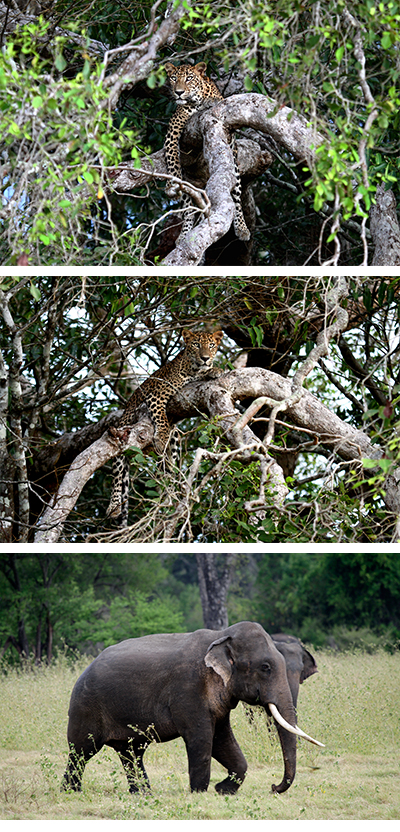

Wilpattu National Park |
|
Situated in the Northwest coast of the country the Wilpattu National Park falls under Northern, Northwestern and North Central Provinces of Sri Lanka and is the largest and one of the oldest National Parks in the island spanning an area of 131,667.81 hectares. Wilpattu, the translation of its name being ‘Land of Lakes’ for the large number of ‘Villus’ or natural lakes it contains was first named as a Sanctuary in 1905 and later a National Park on the 25th of February 1938. Wilpattu is 170 km from Colombo and 30 km west of Anuradhapura. Wilpattu being in the dry zone comprises of a thick forest cover of Dry mixed evergreen forests fed by its diverse system of villus or the natural lakes amounting over about 25. The annual temperature is 27 C and an annual rainfall of 1000 mm with heavy rainfall in the months of September to December. Wilpattu experiences a dry season between May to September. This landscape of dry zone forests, thorny shrubs, extensive open plains and sand dunes come under 13 major habitats which fall under 3 major ecosystems, forest ecosystems, wetland ecosystem and coastal and marine ecosystem. There is recorded 623 flowering plant species belonging to 123 plant families and amoung them 27 are endemics and 21 plants are recorded as threatened. This diverse ecosystem is home to many species of animals with 284 species being recorded out of which 21 are endemics and 30 are nationally threatened. The fauna includes 31 mammals such as the Elephant, Leopard, Sloth Bear, Spotted Deer Jackal, and Water Buffalo. Amoung reptiles, the most common being the Mugger Crocodile and others includes the Water Monitor, Indian Python, Star tortoise, Pond turtle etc. Wilpattu is also home to several amphibian species. The Villus and its complex wetland ecosystem is home to 194 species of birds such as the Painted Stork, Open billed stork, White ibis etc. and within the forests are found the Greater racquet-tailed drongo, Crimson breasted barbet, fish owl, Sri Lanka jungle fowl etc. An interesting occurrence in respect to marine life is the presence of Dugongs in two bays along the coastline of the Park named the Portugal and Dutch bays. Wilpattu is also home to unique cultural heritage with the Kudiramalai area along the coast believed to have been the place called Thambapanni where Prince Vijaya, the first King of Lanka was said to have landed. Around 68 archaeologically important sites have been identified within the park, 4 of which are Miocene fossil sites and 12 sites belonging to the prehistoric period with the rest a combination of protohistoric and historic sites. Further the remains of an ancient harbour between Palagaturai and Kollankanatte has been identified. Main attractions:Best Season: February Routes: The main access route and entrance is at Hunuwilagama. |
 |